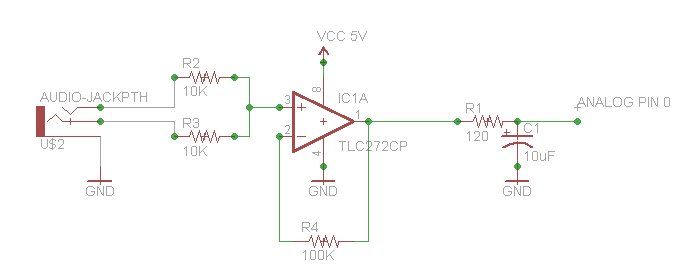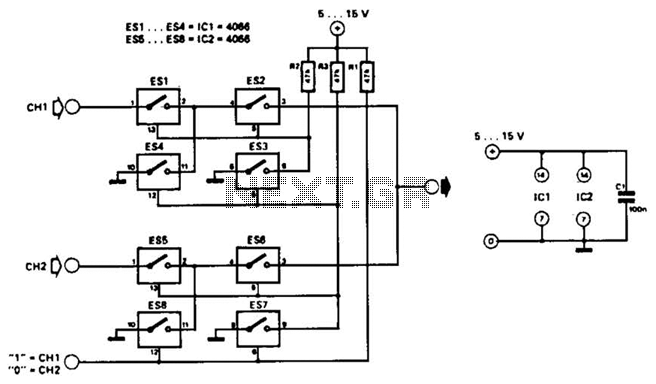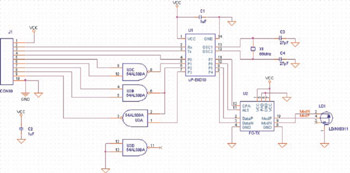
High Off Isolation Video Switch/Multiplexer

A video switch is necessary to multiplex several video sources, allowing multiple cameras to be displayed sequentially on a single monitor. This multiplexing process...
A video switch serves as a critical component in video signal management, particularly in applications where multiple video sources need to be displayed on a single output device, such as a monitor. The primary function of a video switch is to select one of several input video signals and route it to the output, enabling seamless transitions between different video sources.
Typically, video switches can handle various input formats, including composite video, S-video, component video, and HDMI, depending on the design specifications. The multiplexing capability allows operators to switch between multiple cameras or video feeds without the need for physical disconnection, thereby maintaining signal integrity and reducing setup time.
In a typical configuration, a video switch may feature multiple input ports corresponding to each video source, along with a single output port connected to the display monitor. Control mechanisms can vary, including manual switches, remote controls, or automated systems that can be programmed to switch based on specific criteria or schedules.
Advanced video switches may also incorporate features such as picture-in-picture (PiP), where two video sources are displayed simultaneously, or video scaling, which adjusts the resolution of the input signal to match the output display. Additionally, some video switches offer audio switching capabilities, allowing for the synchronization of audio signals with the selected video source.
In summary, a video switch is an essential device for efficient video management in numerous applications, including broadcasting, live events, and surveillance systems, ensuring that multiple video sources can be easily and effectively managed.Video switch is required to mux/multiplex several video sources, enable multiple camera to be displayed subsequently on a single monitor. This multiplexing.. 🔗 External reference
A video switch serves as a critical component in video signal management, particularly in applications where multiple video sources need to be displayed on a single output device, such as a monitor. The primary function of a video switch is to select one of several input video signals and route it to the output, enabling seamless transitions between different video sources.
Typically, video switches can handle various input formats, including composite video, S-video, component video, and HDMI, depending on the design specifications. The multiplexing capability allows operators to switch between multiple cameras or video feeds without the need for physical disconnection, thereby maintaining signal integrity and reducing setup time.
In a typical configuration, a video switch may feature multiple input ports corresponding to each video source, along with a single output port connected to the display monitor. Control mechanisms can vary, including manual switches, remote controls, or automated systems that can be programmed to switch based on specific criteria or schedules.
Advanced video switches may also incorporate features such as picture-in-picture (PiP), where two video sources are displayed simultaneously, or video scaling, which adjusts the resolution of the input signal to match the output display. Additionally, some video switches offer audio switching capabilities, allowing for the synchronization of audio signals with the selected video source.
In summary, a video switch is an essential device for efficient video management in numerous applications, including broadcasting, live events, and surveillance systems, ensuring that multiple video sources can be easily and effectively managed.Video switch is required to mux/multiplex several video sources, enable multiple camera to be displayed subsequently on a single monitor. This multiplexing.. 🔗 External reference





